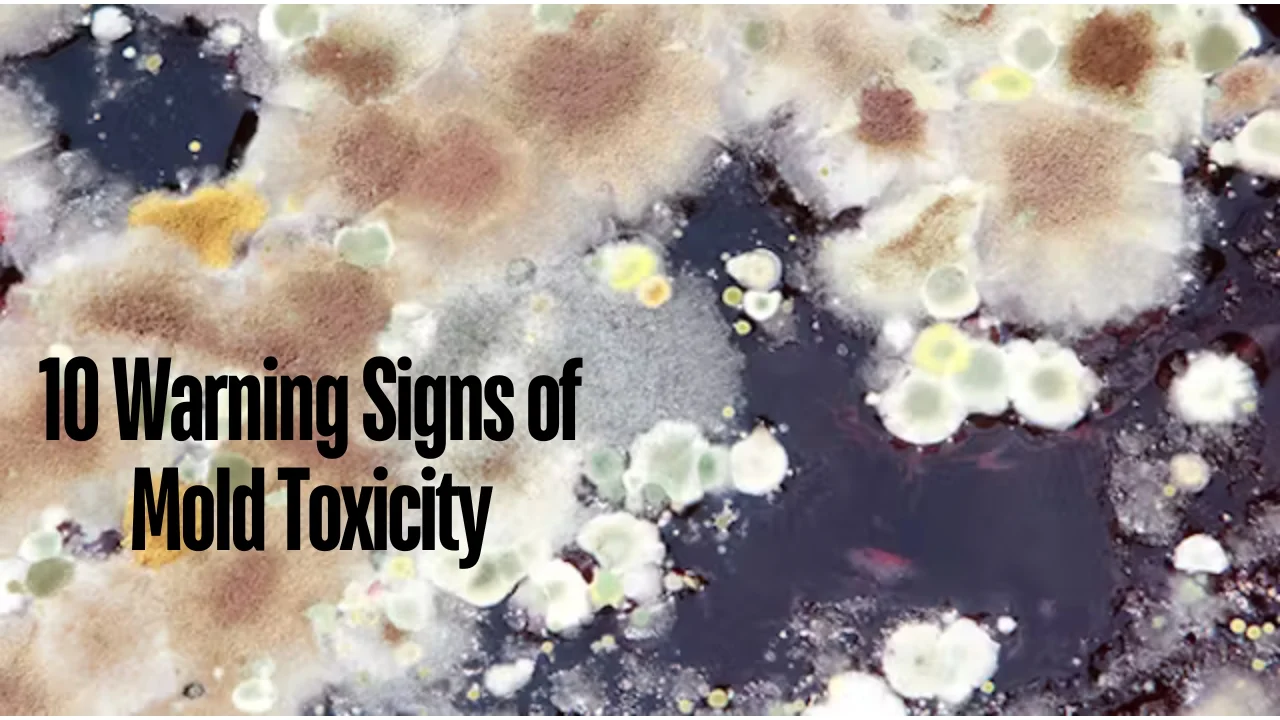10 Warning Signs of Mold Toxicity? Mold toxicity, also known as mold illness, is a serious health issue that can have long-term consequences if left untreated. Exposure to mold can trigger a range of symptoms, some of which may be mistaken for other conditions. Being aware of the warning signs is essential for protecting your health. In this article, we will explore 10 key warning signs of mold toxicity and how to recognize if you might be affected.
1. Chronic Fatigue and Weakness
One of the most common symptoms of mold toxicity is persistent fatigue that does not improve with rest. If you constantly feel tired, weak, or have trouble staying awake even after a full night’s sleep, it could be due to mold exposure. Mold produces mycotoxins that can interfere with the body’s energy production, leading to chronic fatigue syndrome.
2. Cognitive Impairment and Brain Fog
Mold toxins can affect your cognitive functions, causing memory problems, confusion, and difficulty concentrating. Many people exposed to toxic mold report feeling “foggy-headed” or experience mental fatigue. Tasks that were once easy may now seem challenging, and this cognitive decline can become progressively worse if the mold exposure continues.
3. Respiratory Issues
Breathing problems are a hallmark sign of mold toxicity. Symptoms can range from mild to severe and often mimic conditions like asthma or allergies. Common respiratory symptoms include coughing, wheezing, shortness of breath, nasal congestion, and a persistent sore throat. If these symptoms worsen when indoors and improve when you’re outside, mold may be the culprit.
4. Unexplained Muscle and Joint Pain
Mold exposure can lead to unexplained aches and pains, particularly in the muscles and joints. This is often due to inflammation triggered by the immune system’s response to mycotoxins. The pain can be widespread or localized and may feel similar to conditions like fibromyalgia or arthritis. If you experience persistent pain without a clear cause, consider mold as a potential source.
5. Mood Swings, Anxiety, and Depression
Mold toxicity doesn’t just affect the body; it also impacts mental health. Chronic exposure can cause significant mood disturbances, including anxiety, irritability, and depression. Mycotoxins can interfere with the brain’s neurotransmitters, disrupting mood regulation. Sudden or unexplained changes in your mental state could be a sign that mold is affecting your brain.
6. Digestive Problems
Many people exposed to mold suffer from gastrointestinal issues like bloating, nausea, diarrhea, and abdominal pain. Mold and mycotoxins can disrupt gut health by altering the balance of good bacteria, leading to inflammation and digestive discomfort. If you notice persistent digestive symptoms that don’t seem linked to food or other triggers, mold exposure might be worth considering.
7. Chronic Sinus Issues
Sinus infections, nasal congestion, and headaches are frequently associated with mold toxicity. Mold spores can irritate the nasal passages, leading to chronic sinus problems that don’t respond to standard treatments. If you suffer from recurring sinus infections or constant sinus pressure, it’s possible that mold in your environment is to blame.
8. Skin Irritation and Rashes
Skin symptoms are another common but often overlooked sign of mold toxicity. Rashes, itching, and hives can occur when mold toxins are absorbed through the skin or inhaled. The skin may become red, inflamed, or develop eczema-like patches. These skin issues can be persistent and may not respond to typical dermatological treatments.
9. Heightened Sensitivity to Smells and Chemicals
Mold exposure can make you more sensitive to everyday chemicals and smells, a condition known as multiple chemical sensitivity (MCS). People affected by mold toxicity may find themselves suddenly intolerant to perfumes, cleaning products, smoke, and other strong odors. This increased sensitivity is due to the immune system being overburdened by mold toxins.
10. Frequent Headaches and Migraines
Headaches, including severe migraines, are common symptoms of mold toxicity. Mycotoxins can cause inflammation in the brain and nervous system, triggering recurring headaches. These headaches may worsen in damp or moldy environments and improve when you’re in a cleaner space. If you experience unexplained, persistent headaches, mold exposure could be a factor.
What to Do if You Suspect Mold Toxicity
If you’re experiencing any of the above symptoms and suspect mold could be the cause, it’s essential to take action:
- Inspect Your Living or Work Environment: Look for visible signs of mold growth, such as black, green, or white patches, and check for areas with excessive moisture like basements, bathrooms, and kitchens.
- Consider Professional Mold Testing: A professional inspection can help identify hidden mold and determine the type and level of mold in your environment.
- Improve Air Quality: Invest in air purifiers with HEPA filters to reduce mold spores and toxins in the air. Dehumidifiers can also help control moisture levels, making your environment less conducive to mold growth.
- Seek Medical Advice: If you believe mold is affecting your health, consult a healthcare professional who is knowledgeable about mold toxicity. Treatment may include detoxification protocols, dietary changes, and medications to reduce inflammation and manage symptoms.
- Remediate the Mold Problem: If mold is found in your home or workplace, it’s crucial to have it professionally removed. DIY mold removal can sometimes worsen the issue by spreading spores, so professional remediation is recommended for large infestations.
Conclusion
Mold toxicity is a serious condition that can significantly impact your quality of life. By recognizing the warning signs and taking prompt action, you can protect your health and prevent long-term damage. Whether you’re dealing with mild symptoms or more severe health issues, addressing mold exposure early is key to recovery and maintaining well-being.

